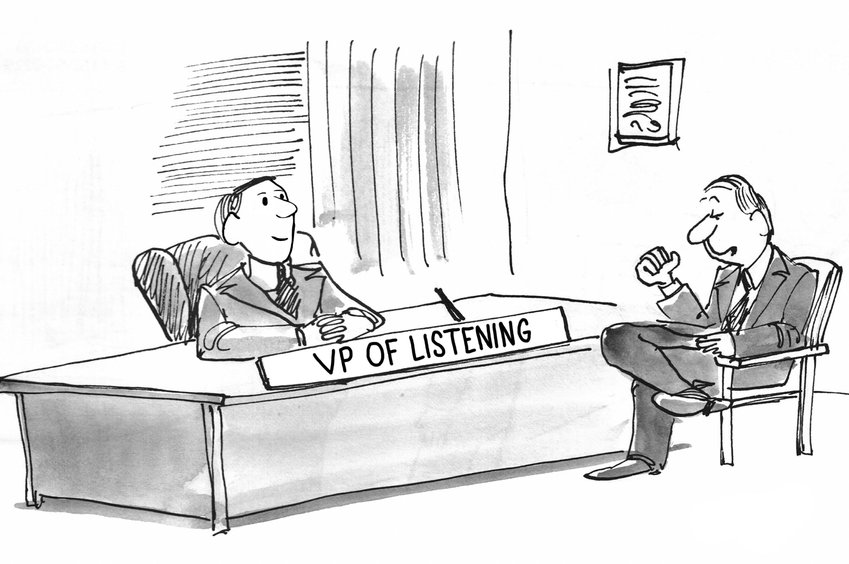
The purpose of consistent and well-written external communications with clients, prospects, vendors and other stakeholders is to increase visibility, credibility and name recognition in the marketplace to stimulate business growth. But external-facing content is not the only type of communication that drives higher revenue. What about internal communications that foster engagement, innovation and collaboration within an organization? According to a recent study by Gallup, sales and profitability increase 20 percent when employees are actively engaged. At the same time, the same study showed 65 percent of U.S. employees are not engaged at work. With this disparity, imagine the opportunities for growth when companies give as much thought and attention to their internal communications as they do to their external messaging.
Internal Communications Defined
Internal communication is the content companies develop and share across multiple mediums and platforms to inform, educate, motivate, guide and engage employees at all levels throughout an organization. It provides transparency about decisions, corporate initiatives, use of resources, and changes made by senior leaders and within departments. Internal communications keep employees informed about company goals, vision and mission, and, when done well, foster pride and loyalty.
Internal communications also lead to collaboration and alignment. Sonia Fiorenza, communication leader at SocialChorus, explains the importance of getting information to employees on how and where they want it. “To help better connect employees with relevant information, internal communicators need to find ways to reach employees. That means utilizing a platform to connect employees and targeting communications through the digital experience to help break through the noise.” Internal communications can take many formats such as newsletters, bulletins, videos, signage, social media posts, email or intranet, and in-person and virtual meetings.
Five Key Areas for Internal Communications

What do employees want to know? Anything and everything. That said, there are five vital ways to build an internal communications program. They include:
- News and updates: According to Geckoboard, 80 percent of employees want leaders to share more information about company performance. Further, 50 percent of employees admit to doing their own detective work to discover more about the state of their organization. With consistency, frequency and transparency as guidelines, address employee needs by communicating milestones, successes and even disappointments.
- Continuing education opportunities. Most employees are eager to hone their skills and learn new ones. They want opportunities for advancement. Whether offered in a traditional classroom environment or via online learning, provide employees with formal and informal ways to develop personal and professional skills. Conduct these sessions using either internal or external sources. Additionally, make sure employees know what resources are available to them. Examples include handbooks, manuals, industry publications, videos and suggested reading lists.
- Thought leadership. Employees benefit when they see their leaders speak at industry events, be interviewed by the media and produce content (white papers, bylined articles, success stories) that position the company as a marketplace leader. Not only do they develop a sense of pride, but they are exposed to new information to help them perform better on the job.
- Business strategy. Written documents or plans that include mission and vision statements and company goals are important forms of internal communications. They help build alignment across the entire organization and get everyone on the same page. The key here is to provide progress reports and updates regularly to keep everyone motivated.
- Brand image and company culture. A consistent brand identity through all business touchpoints builds deep and meaningful relationships. This extends beyond external marketing initiatives. The look, feel and values of the company also need to be front and center with every internal communication. Contain part of this information in a style guide. Or share it through a defined and clearly articulated company culture and reinforce this through actions and words.
Focus on Outcomes

To create the growth all businesses strive for, unite leaders, stakeholders and employees at all levels. That’s why an effective internal communications strategy should be a critical aspect of every organization’s daily operations. While you likely have a defined strategy in place for communicating with external audiences, the same level of care should be applied to your own employees and internal stakeholders. But beyond sharing important information with internal audiences, open the door for two-way communication. Employees who feel as though they are listened to are more likely to stay with their employers and contribute to the workforce with enhanced performance. A successful internal communications strategy leaves every employee feeling educated, informed, inspired and valued. Because employee needs are always changing, continually reassess strategies to make sure they are connecting with your workforce. Optimize your employee experience through effective communication and your business will realize the benefits.
